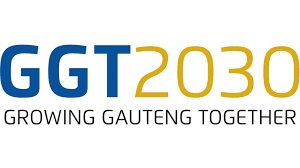Rescue Courses
Rescue courses are conducted at Lebone College of Emergency Care (LCOEC) with the aim of improving rescue skills in different rescue environments, to reduce and highlight awareness of potential risks posed in different rescue environments, it is also to equip students with practical and theory skills within this environments. This was informed by high injuries and incidents such as of motor vehicle accidents, burning houses and entrapments of victims within the burning building, houses and apartments,entraments of victims in high buildings,Trech, mining shafts either old and new shafts, burning or other unforeseen/planned situations. Initially this course was aimed at training all GPG employees including private/public candidates…apply now!
The College is Conducting Three Rescue Modules and Defensive Driving Programme:
Course Name:
High Angle 1 Rescue
NQF:
Level 6 (12 credits)
Duration:
Two weeks (10 days)
Schedule:
The training prospectus provides the schedule for Rescue Courses on an annual basis. The selection process for these courses occurs in two phases. The first phase includes application with the relevant documentation. The second phase is a physical fitness assessments. Successful candidates will be informed of their course dates by EMS Operation Office.
Entry Requirements
Physical Fitness assessment prior the course:
- Flex hang: Students expected to hang for 30 seconds on a pull up bar
- 5 kilometre run: Students expected to run 5 kilometres in less than 32 minutes
Documentation
-
- Certified copy of Grade 12 certificate
- Certified copy of code C1 driver’s licence with Prdp
- Certified copy of Identity Document
- Copy of HPCSA card
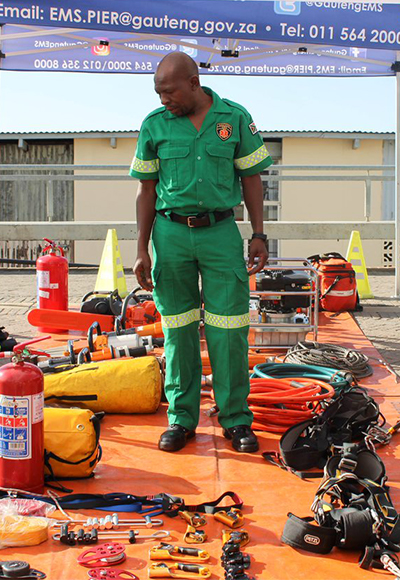
Outcomes
The aim of this course is to provide you with the necessary insight, theoretical knowledge and technical skills needed to function as an independent rope rescue technician, regarding suspended at height below or above the ground during entrapments, Each section has been carefully designed to provide you with important learning tasks and experiences, each of which is linked to an expected learning outcome.
The course is divided into the following learning units:
- Introduction to High Angle Rescue
- Knots used in the High Angle Environment
- Equipment used in the High Angle Environment
- Anchor Points and Rigging of Systems
- Belaying Principles and Techniques
- Abseiling Principles and Techniques
- Ascending Principles and Techniques
- Self-Rescue Concepts
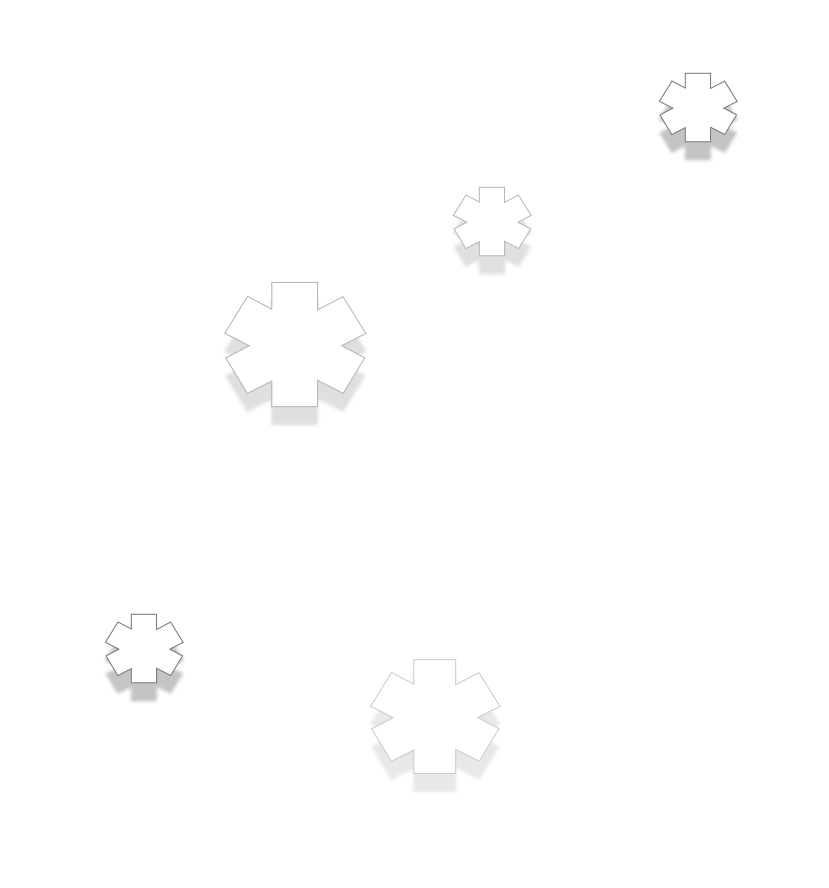
Course Name:
Fire Search and Rescue
NQF:
Level 6 (12 credits)
Duration:
Two weeks (10 days)
Schedule:
The training prospectus provides the schedule for Rescue Courses on an annual basis. The selection process for these courses occurs in two phases. The first phase includes application with the relevant documentation. The second phase is a physical fitness assessments. Successful candidates will be informed of their course dates by EMS Operation Office.
Entry Requirements
Physical Fitness assessment prior the course:
- Flex hang: Students expected to hang for 30 seconds on a pull up bar
- 5 kilometre run: Students expected to run 5 kilometres in less than 32 minutes
Documentation
- Certified copy of Grade 12 certificate
- Certified copy of code C1 driver’s licence with Prdp
- Certified copy of Identity Document
- Copy of HPCSA card
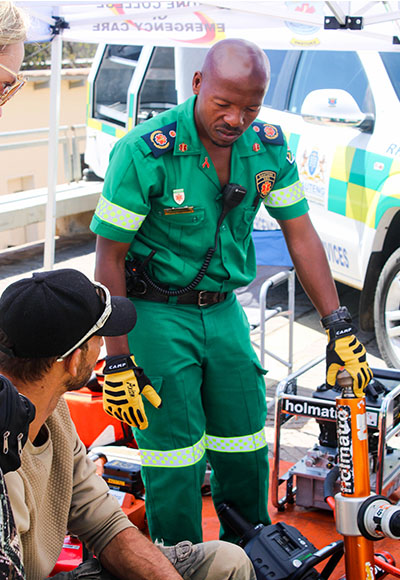
Outcomes
The Fire Search and Rescue course will provide you with the necessary knowledge and skills for incidents involving victims that need to be searched for, and rescued from incidents involving oxygen deprived environments in smoke, heat-filled compartments and Fire environment. The course will highlight basic fire behaviour and its dynamics as well as the equipments that are used for firefighting and Patient treatment. The major focus of the course will be the use of self-contained breathing apparatus and deployment for search and rescue.
The course is divided into the following learning units:
- Fire Dynamics and Fire Behaviour
- Personal Protective Equipment used for Fire Search and Rescue
- Search and Rescue Techniques on the Fireground
- Fire Fighting Equipment

Course Name:
Motor Vehicle Rescue
NQF:
Level 6 (12 credits)
Duration:
Two weeks (10 days)
Schedule:
The training prospectus provides the schedule for Rescue Courses on an annual basis. The selection process for these courses occurs in two phases. The first phase includes application with the relevant documentation. The second phase is a physical fitness assessments. Successful candidates will be informed of their course dates by EMS Operation Office.
Entry Requirements
Physical Fitness assessment prior the course:
- Flex hang: Students expected to hang for 30 seconds on a pull up bar
- 5 kilometre run: Students expected to run 5 kilometres in less than 32 minutes
Documentation
- Certified copy of Grade 12 certificate
- Certified copy of code C1 driver’s licence with Prdp
- Certified copy of Identity Document
- Copy of HPCSA card
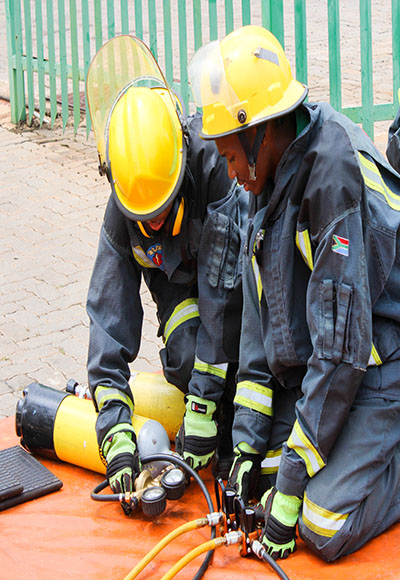
Outcomes
The Motor Vehicle Rescue course will provide you with the necessary knowledge, skills and techniques to extricate entrapped victims involved in land-based vehicle collisions. The course will focus on the fundamentals of vehicle anatomy and new car technology, collision trauma and the management of a vehicle accident. The techniques and equipment used to extricate patients will be dealt with in detail during this course.
The course is divided into the following learning units:
- Safety During Vehicle Rescue
- Vehicle Anatomy and New Car Technology
- Vehicle Rescue Tools and Equipment
- Phased Approach to Vehicle Rescue
- At the Scene of a Vehicle Rescue

Course Name:
Defensive driving
NQF:
Not aligned. Short course.
Duration:
One week (5 days)
Schedule:
As per the annual training prospectus, a name list is requested from operations for the available spaces. The programme accommodate minimum of 6 to the maximum of 12 Candidates.
Accreditation
Internal
Entry Requirements
- Nominations by EMS operation
- Certified copy of Grade 12 certificate
- Certified copy of code C1 driver’s licence with Prdp
Certified copy of Identity Document
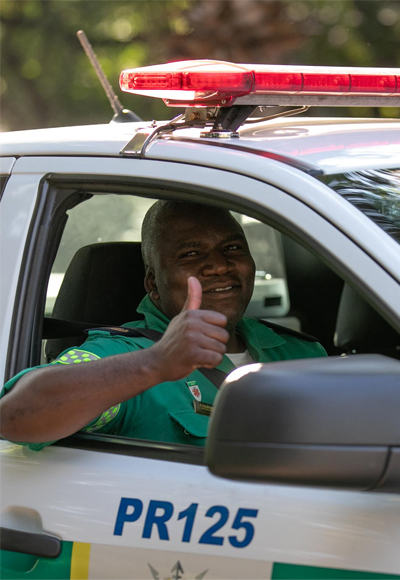
Outcomes
It is defined as an attitude or approach that one can adopt when operating a vehicle to save lives, time and money in spite of the conditions around you and the actions of others.
The programme is mandatory for all who drive state vehicles with the aim of improving their driving skills. One must be able to maintain state issued vehicle in a good running conditions and should always prepared for the unexpected.
The course is divided into the following learning units:
- Vehicle inspection
- Driving inaccuracies
- Defensive driving principles
- Situation awareness
- Stopping distance
- How to avoid an accident
- Driving situations
- Emergencies
- Emergency Parking
- Adverse driving conditions




